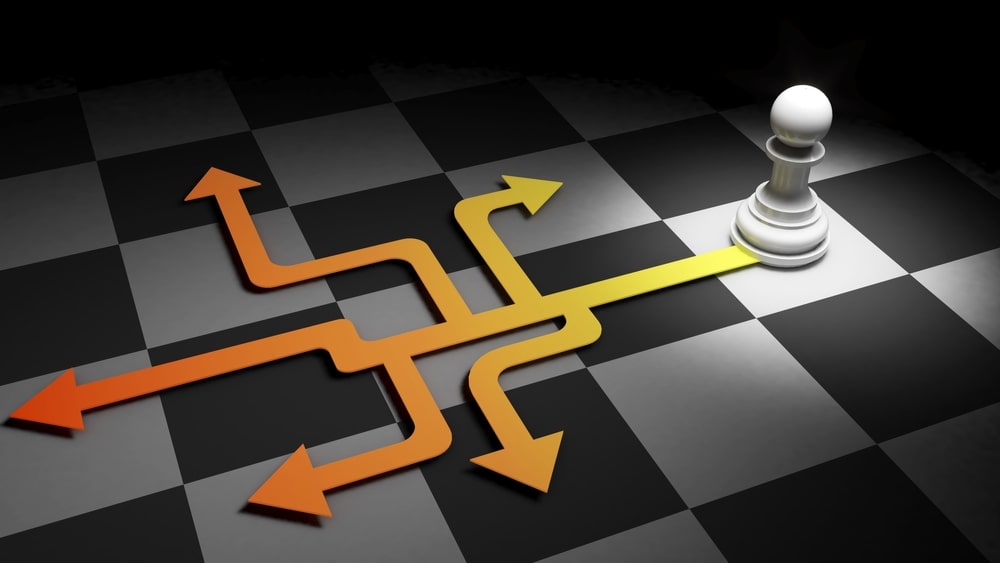Every customer interaction tells a story that unfolds across touchpoints, channels, and time. Whether that story delights or disappoints depends on how well you’ve designed and orchestrated the customer experience.
This guide walks you through the essential elements of customer experience design, from journey mapping and behavioral economics to measurement and optimization. Learn how to craft compelling customer journeys that resonate with your audience and drive sustainable business success.
What Is Customer Experience Design?
Customer Experience (CX) Design is the strategic practice of crafting and orchestrating all interactions between an organization and its customers. It encompasses the complete compilation of emotions and perceptions that customers experience throughout their journey with an organization, from initial awareness through long-term loyalty. Unlike traditional organizational approaches that fragment customer interactions across departmental silos, effective CX design takes a holistic, customer-centric view of all touchpoints and interactions.
Customer Experience Design vs. User Experience Design
While often conflated, Customer Experience Design takes a broader view than User Experience (UX) Design. UX typically focuses on specific product or service interactions, while CX encompasses the entire customer journey across all touchpoints and channels.
CX Design considers organizational structure, processes, and cross-departmental coordination that impact customer perception and satisfaction. Most importantly, CX design addresses the fundamental “org-chart disconnect” where internal structures and silos can create artificial barriers in the customer journey.
The Importance of Customer Experience Design
Organizations must prioritize CX design because fragmented, poorly designed experiences lead to:
- Customer attrition and lost revenue from incomplete journeys and poor handoffs.
- Damaged brand reputation from inconsistent experiences.
- Increased operational costs from inefficiencies and rework.
- Missed opportunities for customer loyalty and advocacy.
- Reliance on heroic efforts by frontline staff to patch experience gaps.
Effective CX design breaks down organizational silos and aligns the entire company around delivering value through the customer journey. It recognizes that customers experience the output of business processes, not departmental structures.
6 Elements to Engaging Customer Experience Design
Creating an engaging customer experience requires mastery of several interconnected elements that work together to shape how customers perceive and interact with your organization. Let’s explore the six essential elements that form the foundation of effective customer experience design.
Customer Journey Mapping and Orchestration
Comprehensive journey mapping forms the foundation of excellent customer experience design. The process involves documenting every interaction a customer has with your organization, from initial awareness through long-term dedication.
Journey mapping breaks down departmental silos by focusing on the customer’s path rather than internal structures. By identifying and optimizing key Moments of Truth (MoT) throughout the journey, organizations can create seamless transitions between departments and channels and eliminate the handoff issues that often thwart customer experiences. This process is supported by proactive measurement systems and Customer Obsession Yield Number (COYN) metrics, enabling continuous monitoring and improvement of journey effectiveness.
Moments of Truth Framework
The customer journey is punctuated by critical interactions that can make or break the relationship between the organization and the customer. These Moments of Truth begin with the Zero Moment of Truth (ZMoT), where potential customers conduct initial research and form first impressions in the digital space. This is followed by the First Moment of Truth (1st MoT), the crucial decision point where customers choose your offering over competitors. The Second Moment of Truth (2nd MoT) occurs during initial usage, where customer expectations meet reality. Finally, the Third Moment of Truth (3rd MoT) represents the feedback and advocacy phase, where satisfied customers can become powerful brand advocates. Each of these moments requires specific strategies and capabilities to ensure positive outcomes.
AIDA(S) Journey Model Integration
The Awareness, Interest, Desire, Action, and Satisfaction or AIDA(S) framework provides a structured approach to understanding and optimizing the customer journey. Beginning with Awareness, organizations must capture attention through strategic content and presence, particularly in digital channels. Interest is built through compelling value propositions and clear communication of benefits. Desire emerges through emotional connections and personalized experiences. Action represents the conversion phase, where friction must be minimized. Finally, Satisfaction is achieved through consistent delivery that exceeds expectations. Success requires aligning organizational capabilities with each stage of this framework.
Behavioral Economics and Choice Architecture
The science of human decision-making provides powerful tools for crafting more effective customer experiences. Understanding and applying behavioral economics principles allows organizations to guide customer decision-making while respecting autonomy. This “libertarian paternalism” approach involves carefully designing choice presentations to optimize outcomes while maintaining customer freedom. Success requires a deep understanding of cognitive biases and heuristics, combined with empathy mapping to grasp customer thoughts, feelings, and motivations at each journey stage. The goal is to create purpose-driven experiences that align with customer values while subtly guiding them toward beneficial choices.
Purpose-Driven Experience Design
Effective experience design begins with developing detailed customer personas based on comprehensive research and data. Personas then inform the creation of empathy maps that capture the full spectrum of customer thoughts, feelings, words, and actions throughout their journey. Design decisions must balance customer and business objectives while considering whether the offering represents a search, experience, or credence good. Each type presents unique challenges and opportunities that must be addressed through thoughtful application of behavioral economics principles and strategic design choices.
Experience Measurement and Optimization
A well-designed customer experience is only as good as your ability to measure and improve it over time. Beyond traditional satisfaction surveys, modern CX requires proactive measurement systems that provide real-time insights into performance. The COYN offers a comprehensive framework for tracking progress across all journey stages, monitoring conversion rates and customer attrition throughout the AIDA(S) framework. Clear metrics for each MoT help organizations identify and address experience gaps proactively, fostering a culture of continuous improvement based on data-driven insights.
Implementing Your Customer Experience Design
Successful implementation of customer experience design requires a systematic approach across several key areas. First and foremost, organizations must establish strong CX governance and ownership. This involves creating clear lines of responsibility and accountability for CX initiatives, developing robust processes for managing CX artifacts, and maintaining consistent experience delivery across all channels. Without this foundation of governance, even the best-designed experiences can fall short in execution.
The second crucial step is creating and maintaining comprehensive CX artifacts. This goes beyond simple documentation to include detailed customer journeys, service blueprints, regularly updated personas, and thorough empathy maps. These artifacts should be housed in a central repository where they can be easily accessed and updated by all relevant stakeholders. Think of this repository as the single source of truth for your organization’s customer experience design.
Building cross-functional alignment represents the third critical element of implementation. Success requires breaking down traditional departmental silos and fostering a shared understanding of the customer journey across the entire organization. With thorough alignment, all capabilities orient toward meeting customer needs and that handoffs between departments are seamless from the customer’s perspective.
The fourth component involves implementing a robust measurement infrastructure. This includes deploying COYN tracking systems, establishing real-time monitoring capabilities, and creating effective feedback loops for continuous improvement. These measurements provide the data-driven insights needed to validate design decisions and identify areas for enhancement.
Finally, organizations must enable continuous improvement processes that keep the customer experience fresh and relevant. This involves regular reviews and updates of CX artifacts, ongoing optimization of touchpoints, and iterative refinement of experience design based on performance data and customer feedback.
Navigating Customer Experience Design with Accelare
Transforming customer experience design from theory to practice requires a structured yet adaptable approach. Accelare’s Hi-Def Operating Model transforms customer experience design from an abstract concept into a concrete, manageable system. The model provides a comprehensive approach to developing and managing CX artifacts through detailed catalogs. These catalogs serve as living documents that capture and maintain critical information about services, journeys, personas, and capabilities.
The model’s process-centric design naturally breaks down organizational silos, replacing them with streamlined workflows that align directly with customer needs. This alignment extends across the entire journey, ensuring that every resource supports the desired customer experience. The integration of COYN metrics provides clear visibility into performance that powers data-driven optimization at every stage.
Through this structured yet flexible approach, organizations can build and maintain exceptional customer experiences that drive business value and foster long-term loyalty. The model’s emphasis on rigorous documentation and control, combined with its focus on continuous improvement, makes customer experience design a sustainable, scalable capability rather than a one-time initiative.
The first step in improving your customer experience design is understanding where you stand. Take our quick, no-strings-attached customer experience assessment to diagnose your CX across five domains and receive a free report from our team.











